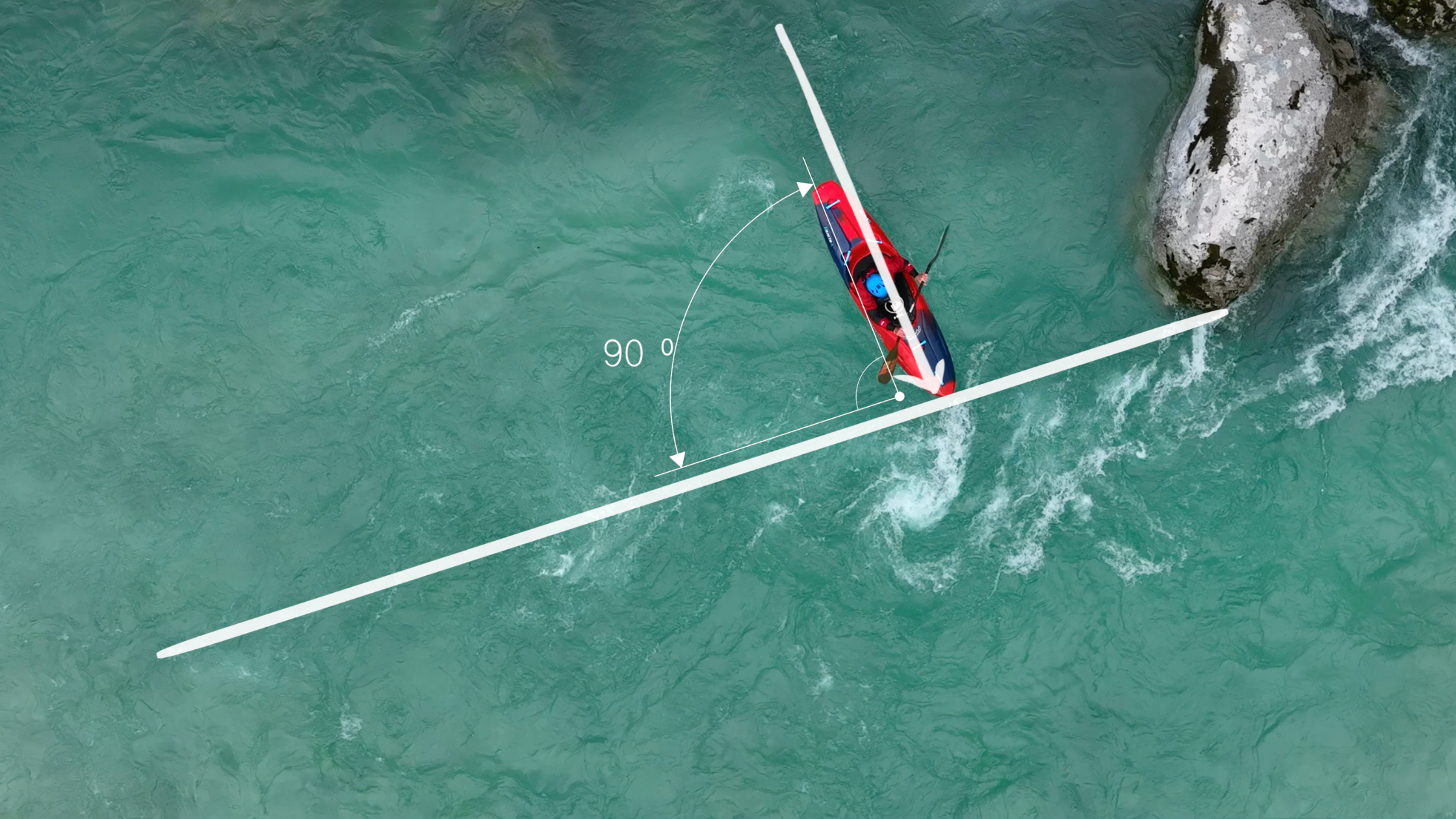Choosing Your Angle: A key part of the Break-In
Nov 04, 2025
Many of us were originally taught that the “classic” break-in angle is a simple 45 degrees. Hit the eddy line at that angle, lift the edge, carve into the flow, job done.
But in reality, it isn’t quite that simple. There is no single magic angle that works for every river, every eddy, or every paddler’s intention. Instead, we have options and understanding them can make your break-ins smoother, more controlled, and far more effective.
In this blog, we explore the pros and cons of the main angles used when breaking in, how they affect the boat, and when you might choose one over another.

Why Angle Matters
As paddlers, we choose our angle based on three main factors:
- What we want the boat to do
- The nature of the eddy line
- Our next move on the river
Different angles give very different results. Some provide a smooth, gliding carve into the flow; others spin you quickly into your next manoeuvre.

The 45-Degree Angle: Smooth, Progressive, Controlled
Approaching the eddy line at roughly 45 degrees allows the boat to pick up and glide beautifully into the flow. This angle creates a gradual, wide arc, giving a progressive turn that feels stable and controlled.

Why it works well
- The boat doesn’t get grabbed aggressively by the eddy line.
- You’re carried deeper into the main flow.
- Perfect for setting up moves that require you to finish further across the river.
A little momentum, a lifted edge at the right moment, and the boat carves out cleanly. It’s a reliable and confidence-building approach.

The 90-Degree Angle: Fast, Tight, and Punchy
At the other end of the spectrum, approaching at 90 degrees means pointing straight across the river. Hitting the flow like this creates a quick, tight, more aggressive turn.

When it’s useful
- When the eddy line is close and you don’t have much lead-in
- On low-volume rivers
- When you want to spin sharply and line up for a move close to the eddy you’ve just left
It’s more abrupt, so you’ll likely need to bring your weight forward and commit confidently to your edge.
What Happens When the Angle Goes Wrong
Too Much Upstream Angle: Approaching the eddy line pointed too far upstream removes your ability to carry the boat over the line. Instead, the current takes over. The result?
- You lose drive
- You get stuck on the eddy line
- The confused, boiling water pushes you around unpredictably
Not ideal.
Turning Too Early in the Eddy: Another common issue is setting the edge and starting the carve before actually reaching the eddy line. This turns the boat downstream too soon. The effect is almost the same as approaching upstream:
- You stall on the eddy line
- The stern gets grabbed
- Everything feels twitchy and unstable
Waiting just that little bit longer before committing to the edge makes a huge difference.

It’s Not About Exact Degrees
Don’t worry, no one is turning up riverside with a protractor. In reality, your angle will be somewhere around 45 or 90 degrees, or more often, somewhere between them.
What matters is recognising the effect each angle has on your boat and choosing the one that suits the situation.
A quick recap
- Closer to 45° → smooth, progressive arc into the flow
- Closer to 90° → quick, tight turn requiring sharper edge control
Use whichever helps you achieve your next line best.

While boat angle is a key ingredient in a solid break-in, it’s only one part of the bigger picture. To move cleanly and confidently over the eddy line, we also need to consider how much speed or power we carry into the flow and how much edge we apply as the boat meets the current.
These elements work together, and understanding the balance between them is what truly makes a break-in feel smooth, stable, and predictable.
We cover the full picture of break-ins, along with all the core white water fundamentals, in our White Water Skills Course, which you can explore today with our 7-day free trial.
Stay connected with news and updates!
Join our mailing list to receive the latest news and updates from Online White Water
We hate SPAM. We will never sell your information, for any reason.

